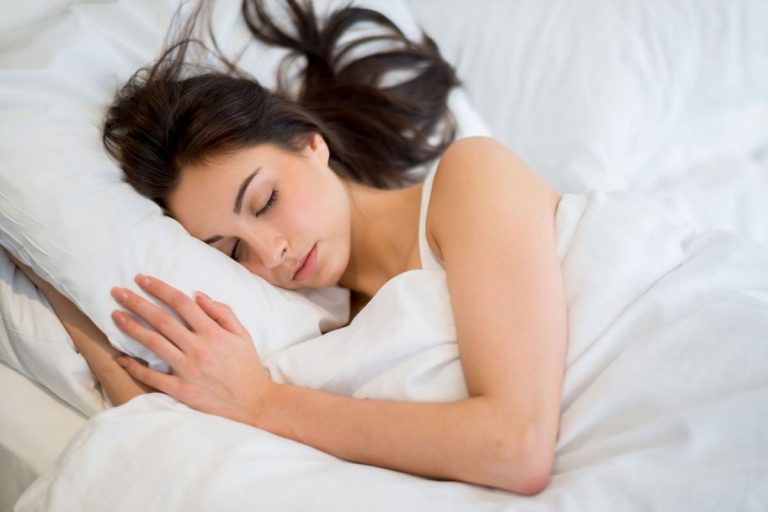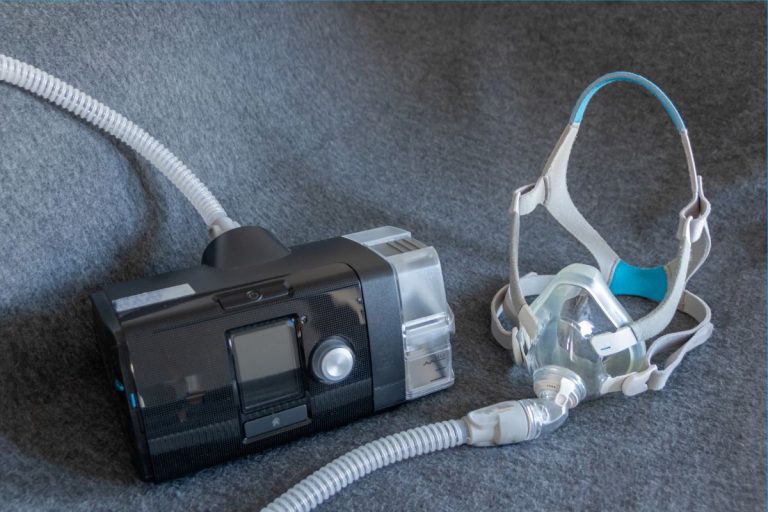Pulse oximeters have a vast application in monitoring people with various respiratory diseases, lung cancer, and other ailments. Still, ever since the COVID-19 pandemics broke out in early 2020, the pulse oximeters sales rose, with a lot of healthcare workers using them to track the progress of the deadly disease.
The ability of the instrument to monitor COVID-19 patients sparked the curiosity of a lot of consumers in the world who believed it could help them detect early signs of the viral infection. If you’re one of them, this article brings you things you need to know before buying a pulse oximeter.
Pulse oximeters can be a great investment for your family and you. It can help you monitor your health and maintain a healthy lifestyle in this new year. Aside from the application regarding the COVID-19, a pulse oximeter can be used for various heart and lung conditions.
Instead of constantly hitting the hospital to inform yourself about your health state, you can easily monitor your oxygen saturation levels using a pulse oximeter. Seeing a less-satisfying value than usual on repeated measurements and not feeling your best-self, should be a clear indication that you need to visit your physician and get yourself checked thoroughly.
Pulse Oximeter: 15 Things You Need To Know Before Buying
Getting informed about what a pulse oximeter is, how it works, and what are other parameters revolving around this term will also help you determine whether you need this device. Also, you’ll learn how you can use it in the best possible way to monitor your health.
1. What Are Pulse Oximeters?
A pulse oximeter is a compact and portable device for healthcare workers to monitor a patients’ oxygen saturation level in blood.
We need oxygen to breathe and survive and it travels through the blood to reach our lungs. The oxygen saturation is measured in blood with the assistance of the heart rate that helps measure it more accurately. Oxygen gets to blood through the small membranes on the surface of our lungs.
After entering the bloodstream, red blood cells bind to it and transmit the oxygen to the rest of our body’s organs.
With that in mind, a pulse oximeter can measure the oxygen saturation in our blood or the oxygen that is carried by our red blood cells. This device is equipped with a tiny infrared sensor, which uses its infrared light refraction to monitor how red blood cells are attached to the oxygen in our blood.
This tiny device looks similar to a clip, in which you insert your fingertip. Alternatively, you can also attach it to your ear lobe to track the oxygen saturation levels. They detect the oxygen through peripheral capillary oxygen saturation, also known as SpO2.
2. Does Using a Pulse Oximeter Hurt?
Even though they attach to your fingerprint or earlobe, using a pulse oximeter doesn’t hurt. As mentioned earlier, they are equipped with a tiny infrared sensor that is safe to use and doesn’t result in discomfort caused by heat. Instead, it’s a reliable method for checking the oxygen saturation in blood, which is painless in the process.
3. How Does Pulse Oximeter Work?
Given that they have an infrared sensor, pulse oximeters use spectrophotometry to measure the oxygen levels in the blood. The said method operates with visible light and uses small rays which can detect the red blood cells in the blood at a certain part of the body.
That sensor will measure how many red blood cells are there, with oxygen bound to them, and compare it to the blood cells that don’t carry oxygen on them. That can be easily noticeable because the blood with oxygen in it is darker as opposed to the blood that is deoxygenated.
The super-sensitive sensors inside the pulse oximeter can make a comparison between the blood variations and detect the blood cells that carry the blood with them. The reading is then calculated and displayed on a digital display located at the top panel of the pulse oximeter.
The consumer sees the result displayed in percentages.
4. What Can You Measure Using Pulse Oximeters?
Most pulse oximeters, whether in-home or hospital ones can display two values and that:
- Blood Oxygen Saturation (SpO2) – We mentioned this earlier. Comparison of the blood cells carrying oxygen to other organs displayed in percentages. According to a study, values of this parameter help decide how effective is the heart at pumping blood to other organs and providing oxygen to them.
- Heart Rate – To supplement the need to measure blood that is pumped inside the blood vessels by the heart, devices also display the heart rate which is displayed in rate per minute. Also, the heart rate is necessary to see how good the heart is at pumping oxygen through the blood to other organs.
Some devices offer you the opportunity to measure only the heart rate. When the blood oxygen saturation is being measured, both the percentage and heart rate are displayed.
Also Read:
- Average Sleeping Heart Rate by Age: Why it Matters?
- What Is Resting Heart Rate: The Lower The Better?
- Why Does My Heart Rate Spike When I’m Asleep?
5. Who Needs Pulse Oximeter?
As mentioned earlier, people use a pulse oximeter to see how well does our body performs at transferring the oxygen we need to survive to other organs of our body. In case of certain health conditions, it’s necessary to either check your oxygen saturation levels regularly or own the device itself to monitor your health.
Blood oxygen saturation levels can be affected by an underlying condition as well as other health problems that can result in changed oxygen saturation. Here are diseases that may require you to use a pulse oximeter to monitor blood oxygen saturation.
If you have one of the following conditions, you should have a pulse oximeter by your side.
- Asthma
- Pneumonia
- Anemia
- Heart Attack
- Lung Cancer
- Congenital heart defects
- Chronic Obstructive Pulmonary Disease (COPD)
- Tuberculosis
- A more severe case of flu or some other viral or bacterial infection
According to Medscape, pulse oximeters are effective at determining the severity of acute asthma.
6. What Are The Normal Values For Blood Oxygen Saturation?
The pulse oximeter will show blood oxygen saturation level SpO2 with values being between 96% and 100%, according to a study that details pulse oximetry. Most likely, the value will be from 97% to 99%. However, don’t be concerned if the level drops below 95% occasionally. Repeated measurements should show whether it’s a glitch or you need medical care. Even if the level shows 94%, there is still no reason for concern.
Note: It’s worth noting that people who have some kind of chronic disease may have a blood oxygen saturation level from 90% to 100%. The same goes for people who suffer from some type of sleep apnea, as there are cuts in the breathing cycle during sleep.
Still, if your blood oxygen saturation level often crosses values under 95% and you don’t have other chronic conditions, you should consider a health care expert for advice or check.
7. Are Pulse Oximeters Useful For Treating COVID-19?
Aside from benefits related to various diseases, pulse oximeters have proved to be a valuable asset in treating the novel coronavirus COVID-19. Since some of the most prominent symptoms of the infection are related to the respiratory tract, most of the patients with a more severe case experience shortness of breath which is a result of oxygen level decay.
As the disease progresses towards the lungs and potentially causes either viral or bacterial pneumonia, the blood oxygen saturation begins to plummet. The lungs are under the strong impact of the virus and are incapable of sending enough oxygen in the blood, putting more pressure on the heart.
The percentage of blood oxygen saturation begins to drop and based on the percentage that is usually lower than 90% of patients are admitted to hospital. Patients with the most severe case of infection that need aid and mechanical ventilation usually have a critically low level of blood oxygen saturation, usually going lower than 50%.
8. Can Pulse Oximeters Be Used For Detecting COVID-19 In Early Stages?
The novel coronavirus can cause infection through the respiratory tract, ultimately resulting in pneumonia, which is the inflammation of the lungs. With that in mind, the virus can cause damage to the lungs that prevents it from functioning normally and transferring oxygen into the blood, causing depletion of oxygen levels inside the bloodstream.
It’s important to note that the blood oxygen saturation levels do not deplete only at the critical stage of the disease. It can happen even with the patients who are feeling well and experiencing little to no symptoms.
With that in mind, a pulse oximeter can easily be used to detect early COVID-19 signs at the beginning of infection, which can ultimately prevent the disease from getting worse and compromising the patients’ life. There’s even a study that looks into the effects of pulse oximetry in detecting early COVID-19 and silent hypoxemia.
Low oxygen saturation levels, however, can be caused as a result of many more conditions as mentioned earlier. That means they shouldn’t be used as the ultimate tool to detect COVID-19. Still, if you feel any symptoms that are associated with the novel deadly disease, it should be an alert to visit your health care provider and see whether you should get tested or hospitalized.
Keep in mind, also, that not everyone with COVID-19 will have decaying blood oxygen saturation levels and that they may have other symptoms such as fever, nausea, vomiting, stomach ache, and others while maintaining perfectly healthy oxygen levels of 95-100%.
That’s why taking a PCR or blood test is ultimately the best way to determine the presence of the virus in your body. Oxygen levels could deplete much later, and then it could be too late to control other symptoms without hospitalization or oxygen support.
9. Are Pulse Oximeters FDA Approved?
According to a study that looks into the clinical interpretation of pulse oximeter labels, all pulse oximeters are considered to be prescription medical devices, which means you’d need a doctor’s approval to have one. However, some drugstore models may not require this approval.
Food and Drugs Administration (FDA), however, says that not all pulse oximeters are meant for medical use, especially those that are bought in uncertified stores online or in regular pharmacies and drugstores. With that in mind, given that FDA can’t review all pulse oximeters, you’ll have to check for the label when buying the oximeter, either online or on street drugstores.
On this site, you can read reports on safety for certain devices that you may search for.
10. Are Pulse Oximeters Accurate?
Pulse oximeters are reasonably accurate. Sometimes, the reading maybe 2% more or less of the value that the device has read, as opposed to the value healthcare professionals would get from testing the arterial blood gas. That means that if your device measured 97%, the real value could be either 95% or 99%.
According to a study from October 2020, even more, affordable and consumer-friendly oximeters are safe and accurate for in-home use for tracking the implications of the COVID-19 disease.
11. How To Increase Accuracy of Pulse Oximeters?
As said earlier, pulse oximeters are quite accurate at making readings for the blood oxygen levels. However, some exceptions and other factors may meddle with its accuracy. Errors can be caused by improper functioning of the device, but some other factors can also be taken into account for poor reading.
Always make sure to put your finger properly against the device and sit while it’s reading your oxygen levels. Additionally, don’t put it on your finger with tattoos or dye. Also, try to avoid putting a nail polish. Lastly, don’t measure oxygen levels while your hands are cold, ensure to make your measurements in a sufficiently warm room.
12. How To Use Pulse Oximeters?
Pulse oximeters are mainly used in hospitals with admitted patients, as well as a one-time check. If you use it at home, we highlighted some tips to get better readings.
- Attach the pulse oximeter to the person’s fingertip or earlobe. There is no prickling so there won’t be any discomfort, other than the clipping itself.
- Turn on the device and wait for a few seconds until the first readings of your pulse and early blood oxygen saturation level display.
- Once the reading is done, you can remove the oximeter clip from your finger.
13. Are Pulse Oximeters Harmful?
Oximeters are compact, reliable, and harmless devices that can accurately display the blood oxygen saturation levels, SpO2. Given that they are not invasive, and work like a simple clip that gets attached to your body, there’s no safety concern or risk in using them (especially because they’re FDA-approved)
However, some models may come with an adhesive which can cause skin rash or irritation. That, however, won’t pose risk for your health. According to a study pulse oximeters are a safe way to provide care for patients.
14. Where To Buy Pulse Oximeters?
Pulse oximeters can usually be found at your healthcare provider’s office or in hospitals where admitted patients are being monitored. However, you can buy a pulse oximeter of your own, which you can use at home. There are various places, from online stores and shops like Amazon to local drugstores in the other street.
We displayed the most accurate models that we found, you can check them out and see whether they work for you.
- Best for Children: KidsO2™ Pediatric Oxygen Monitor – Specifically designed for children. It can easily track the oxygen saturation levels, heart rate, as well as different body movements, both daily and when sleeping. It comes with a device alarm that alerts the users if the oxygen levels drop low. Additionally, there is an app for both iOS and Android, with the option to connect via Bluetooth.
- Best for Adults: O2Ring – This compact and reliable device will aid you regardless of whether you’re awake or asleep. It can accurately monitor your blood oxygen saturation and detect abnormal heart rates at any time of the day. It’s greatly beneficial to people with sleep apnea, pneumonia, asthma, anemia, and other conditions.
- Digital Fingertip Pulse Oximeter – If you’re looking for an affordable option to track your pulse and blood oxygen saturation, this is a great option. It can help athletes stay on par with their health while prioritizing oxygen saturation monitoring in a state of respiratory diseases, one of which is the COVID-19.
- MightySat Fingertip Pulse Oximeter – Although it’s a more premium and luxurious option, it provides the performance of medical-grade pulse oximeters. Aside from the accurate heartrate measurements and SpO2 measurements, you can also check the perfusion index, respiration rate, and Pleth variability Index.
- Zacurate Pro Series 500DL – This reliable and easy to use pulse oximeter can easily detect the blood oxygen saturation in everyone older than 12. It is also great for sports enthusiasts who need to stay up to date with their heart rate and saturation levels. It easily displays all the results on a LED display.
Don’t find what you need? check other great choices here.
15. Can Other Devices Be Used to Check Blood Oxygen Saturation?
Aside from pulse oximeters, other devices can be used to detect the oxygen saturation in the blood. Some of them include simple smart watches and bands, as well as oxygen concentrators.
Smart bands usually come with a small infrared sensor located on the wristband, where it picks the oxygen levels directly from your wrists. They may not be as accurate as oximeters, but they’re great for athletes like mountain climbers.
Oxygen concentrators are a little bit different. They are considered oxygen aid for people taking oxygen therapy. They can detect oxygen saturation while also taking the air from the room and filtering the nitrogen. That way it provides more oxygen necessary for oxygen therapy.
While they are available in a lot of sizes, it’s important to note that the FDA doesn’t approve of using them without a prescription.
Know More:





